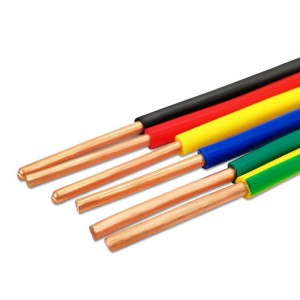Reduce the service life of wire and cable products
This problem is easy to understand. After long-term operation, especially direct burial, immersion in water, exposure to the open air or corrosive environment, the insulation level and mechanical level of the thinnest point of the sheath will decrease due to long-term corrosion by external media. In addition, routine sheath test detection or line grounding fault occurs, the thinnest point may be broken down. In this way, the protective effect of the cable sheath will be lost. In addition, the internal consumption cannot be ignored. The long-term power supply of wires and cables will generate a lot of heat. Here is a little common sense: the conductor allows a working temperature of 70°C, and the long-term use temperature of polyvinyl chloride should not exceed 65°C. So wires and cables are actually in a situation of “internal and external troubles”.

Increased difficulty in the laying process
With the development of global industry, more and more environments require high-voltage cable products to have a small outer diameter. In the process of laying, it is necessary to consider leaving gaps so that the heat generated by the wires and cables after power is turned on can be dissipated. If the thickness of the sheath is too thick, it will increase the difficulty of laying, so the thickness of the sheath must strictly comply with the relevant standards, otherwise it will not be able to protect the wires and cables. You can’t just pursue its thickness.
Based on the above two analyses, it is not difficult to see that the quality of the product is good or bad, and its first feature is reflected in the appearance quality of the product. No matter what kind of product or semi-finished product, the appearance quality must be emphasized in production, and it must be strictly controlled and inspected. The sheath is the appearance of the cable. Its appearance requirements are smooth and round, uniform gloss, no core deviation (not exceeding the specified deviation), no mechanical damage, flattening, no visible debris, bubbles, sand holes, obvious particles, bamboo joints, twists, etc. In addition to meeting the above quality requirements, the thickness of the sheath also has a certain impact on the quality of the cable.
It is well known that the function of the cable sheath is to protect the insulation core of the cable from damage under the action of external forces. If the thinnest point of the cable sheath does not meet the requirements, the cable sheath will be damaged before the normal maximum external destructive force is reached.
If the sheath thickness of the cable is lower than the standard requirement during production, it is unqualified, and the thickness exceeds the standard requirement. So how to control the thickness of the cable sheath?

Measurement of insulation thickness
The measurement of insulation thickness can be used as a separate test or as a step in other tests such as mechanical properties test.
Measurement device for insulation thickness
A reading microscope or a projector with a magnification of at least 10 times, both devices should read 0.01mm. When the measured insulation thickness is less than 0.5mm, the third digit after the decimal point is an estimated reading. In case of dispute, the reading microscope measurement should be used as the reference method.
Test piece preparation
Remove all sheaths from the insulation, pull out the conductor and isolation layer (if any), and operate carefully to avoid damaging the insulation. If the inner and outer semi-conductors are adhered to the insulation, they do not need to be removed.
Each test piece consists of an insulating sheet, and the sheet should be cut off along a plane perpendicular to the conductor axis using an appropriate tool (sharp blade such as a razor blade, etc.).
The core of the flat soft wire without sheath should not be separated.
If there is a dent with a stamped mark on the insulation, the thickness will be thinner at that place, so the test piece should take a section containing the mark.
In summary, in the production process, only by carefully operating the equipment and strictly controlling the sheath thickness according to the standard requirements can the enterprise save resources, reduce material consumption, increase profits, and ensure the quality of the cable.
Post time: 2025-04-24




